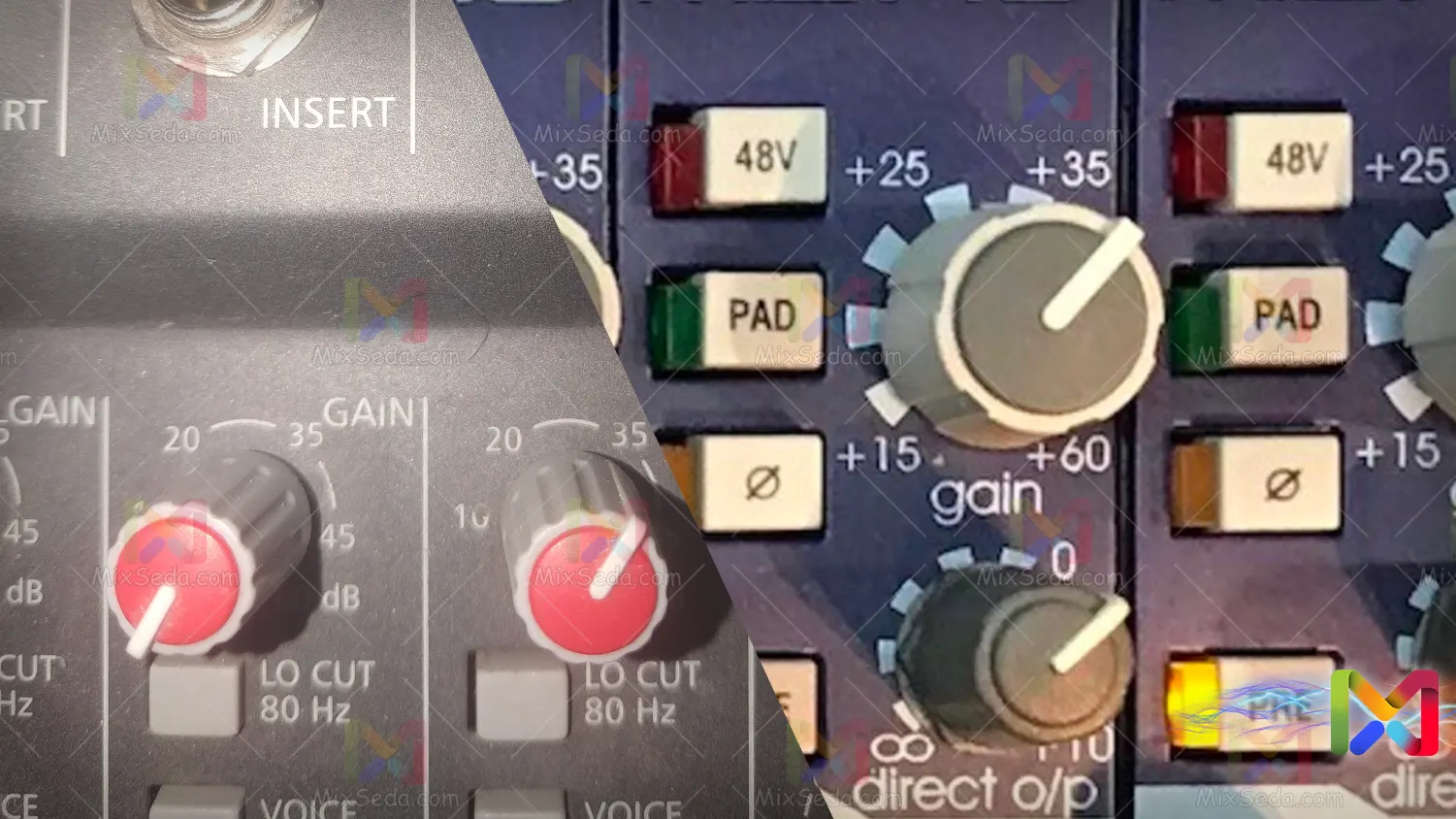
What is the gain?
The gain volume in the mixer is a volume below the input sections of each channel. The job of this volume is to amplify the sound and adjust the amount of input signals from each of the sound lines to the mixer.
The higher the volume, the more sensitive the microphone is to ambient sounds. And the lower the volume, the lower the sensitivity of the sound. Increasing the volume gain usually causes the bands to hiss (distortion of the sound and feedback).
I will explain why in the next articles. Usually before the ceremony, be it concerts or groups, the volume is preset and is not touched during the program.
The slightest change in Volume Gain during audio playback is clearly visible. So, if you are going to change this volume while the singer or fan is reading, be very kind and gentle with this volume. Try to do this as much as possible when no sound is playing from that line.
Adjusting the volume gain depends on several things:
- Microphone type
- Microphone equalization type
- The gender of the singer or the praise
- Distance of the microphone from the person
- To position the microphone and its height
- The direction of the speakers and their downward angle
- The type of mixer the sound engineer works with
- Mixer equalization and output sound
- The type of effect set for each sound line
- The amount of feeders in each row and the sound that comes out of each row
In some other normal or old mixers you don't have a volume called Gain. In fact, the gain is combined with the power supply in each row and there is usually a screw called volume. You can see this mainly in standing mixers. For example, the Dynacord PM 502 power mixer is like this.
